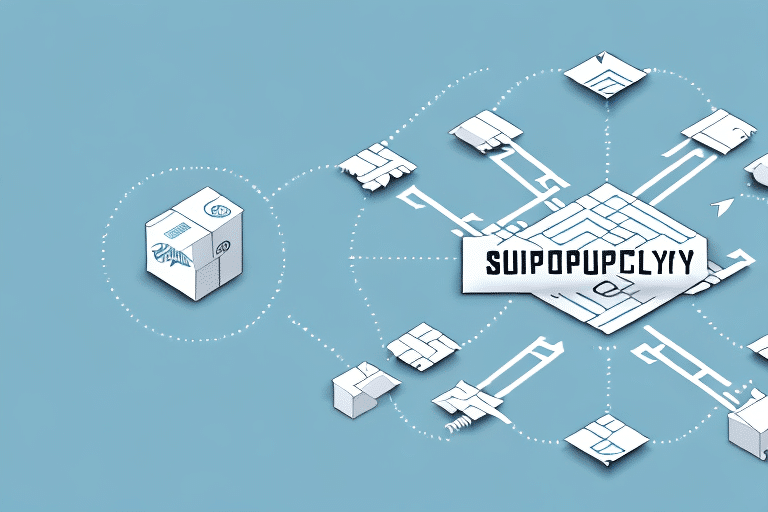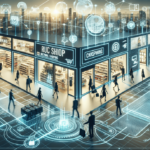Understanding the Retail Supply Chain
The retail supply chain is a multifaceted network that encompasses every stage from sourcing raw materials to delivering finished products to consumers. It involves various stakeholders, including suppliers, manufacturers, distributors, wholesalers, and retailers, all interconnected through transportation, storage, and logistics systems.
Stages of the Retail Supply Chain
- Sourcing: Acquiring raw materials and components needed for production.
- Manufacturing: Transforming raw materials into finished goods.
- Distribution: Moving products from manufacturers to distributors and retailers.
- Retailing: Selling products directly to consumers through various channels.
Challenges in the Retail Supply Chain
Retailers face numerous challenges such as fluctuating customer demands, inventory management, and the need for timely deliveries. Addressing these challenges requires a comprehensive understanding of each supply chain stage and the integration of effective strategies.
Technology and Innovation in the Supply Chain
Advancements in technology have significantly transformed retail supply chain operations, enhancing efficiency, visibility, and decision-making capabilities.
Inventory Management Systems
Modern inventory management software enables retailers to track stock levels in real-time, forecast demand accurately, and optimize product placement within stores. According to a Supply Chain Digital report, businesses that implement advanced inventory systems can reduce holding costs by up to 20%.
Artificial Intelligence and Machine Learning
AI and machine learning algorithms analyze vast amounts of data to predict consumer behavior, optimize inventory levels, and automate replenishment processes. These technologies facilitate data-driven decisions, improving overall supply chain responsiveness.
Future Trends in Supply Chain Technology
Emerging technologies such as blockchain for enhanced transparency, Internet of Things (IoT) for real-time tracking, and autonomous vehicles for transportation promise to further revolutionize the retail supply chain landscape.
Inventory and Demand Management
Effective inventory and demand management are crucial for balancing supply with consumer demand, minimizing costs, and maximizing profits.
Lean Inventory Management
Lean inventory management focuses on reducing waste and maintaining optimal inventory levels. Techniques like Just-in-Time (JIT) production ensure that products are produced only as needed, minimizing excess stock. Implementing lean practices can lead to a 15-30% reduction in inventory costs, as reported by Harvard Business Review.
Demand Forecasting
Accurate demand forecasting combines historical sales data with market trends to predict future product demand. Utilizing both quantitative data and qualitative insights from customer feedback enhances forecast accuracy, reducing the risks of overstocking or stockouts.
Collaboration and Relationships
Strong relationships and effective collaboration with suppliers and distributors are vital for a seamless supply chain.
Building Strong Supplier Relationships
Establishing trust and open communication with suppliers ensures reliable product quality and timely deliveries. Collaborative planning with suppliers can lead to improved efficiency and cost savings.
Effective Communication Strategies
Implementing tools like shared databases, regular meetings, and collaborative forecasting platforms fosters transparency and alignment among all supply chain partners, enhancing overall performance.
Risk Management and Compliance
Proactively managing risks and ensuring compliance with industry regulations are essential for maintaining supply chain resilience and avoiding legal penalties.
Risk Mitigation Strategies
- Diversification: Sourcing from multiple suppliers and transportation routes to mitigate disruptions.
- Contingency Planning: Developing backup plans for potential disruptions such as natural disasters or geopolitical instability.
According to the McKinsey Global Institute, companies with robust risk management frameworks are 50% more likely to recover quickly from supply chain disruptions.
Ensuring Regulatory Compliance
Adhering to industry standards related to quality control, safety, and environmental protection is non-negotiable. Regular inspections, audits, and employee training programs help maintain compliance, safeguarding the retailer's reputation and avoiding costly fines.
Performance Measurement and Optimization
Tracking key performance indicators (KPIs) is critical for assessing supply chain efficiency and identifying areas for improvement.
Key Performance Indicators (KPIs)
- Inventory Turnover: Measures how frequently inventory is sold and replaced over a period.
- Lead Times: The time taken from order placement to delivery.
- Transportation Costs: Total expenses related to the movement of goods.
- Customer Satisfaction: Gauges the overall satisfaction of customers with the supply chain performance.
Regularly monitoring these KPIs enables retailers to make informed decisions, streamline operations, and enhance customer satisfaction.
Identifying and Eliminating Bottlenecks
Utilizing tools like process mapping and root cause analysis helps pinpoint inefficiencies within the supply chain. Addressing these bottlenecks can lead to significant improvements in operational speed and cost-effectiveness.
Scaling and Growth Strategies
As retailers expand, maintaining supply chain efficiency becomes increasingly challenging. Strategic planning and adaptable systems are essential for scaling operations without compromising performance.
Strategies for Scaling Up
- Phased Implementation: Introducing new strategies on a small scale before full-scale deployment.
- Partner Collaboration: Working with experienced suppliers and logistics partners to support growth.
Effective scaling ensures that supply chain processes evolve in tandem with business growth, maintaining efficiency and customer satisfaction.
Preparing for Future Challenges
Developing agility, flexibility, and resilience within the supply chain equips retailers to adapt to evolving market conditions and emerging challenges. Investing in continuous improvement initiatives and staying abreast of industry trends ensures long-term sustainability and competitiveness.
Conclusion
Optimizing the retail supply chain is paramount for achieving maximum efficiency and profitability in today’s competitive landscape. By understanding the supply chain's intricacies, leveraging advanced technologies, fostering strong collaborations, and implementing robust risk management strategies, retailers can enhance their operational performance and deliver exceptional value to customers.






















